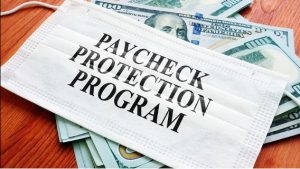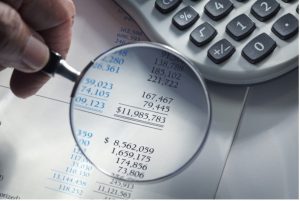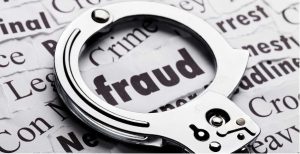 As most can agree, the year of 2020 was absolutely devastating for our world. For the first time in over 100 years, a pandemic hit and took everyone by surprise. The virus, COVID-19, began to infect millions of people and our country took a turn for the worst. Many Americans lost their jobs, small businesses were forced to shut down, and families were mandated to stay inside of their homes to prevent spreading the illness. The big question was: “When is this pandemic going to end?” Still to this day, we question if things will ever be the same again. However, in the midst of the unknown future our government has been doing their best to provide relief programs for small businesses who lost revenue and need help to get back up on their feet. Desperate times call for desperate measures, right?
As most can agree, the year of 2020 was absolutely devastating for our world. For the first time in over 100 years, a pandemic hit and took everyone by surprise. The virus, COVID-19, began to infect millions of people and our country took a turn for the worst. Many Americans lost their jobs, small businesses were forced to shut down, and families were mandated to stay inside of their homes to prevent spreading the illness. The big question was: “When is this pandemic going to end?” Still to this day, we question if things will ever be the same again. However, in the midst of the unknown future our government has been doing their best to provide relief programs for small businesses who lost revenue and need help to get back up on their feet. Desperate times call for desperate measures, right?
The relief program that was created to aid small business owners is called the Paycheck Protection Program (“PPP”) established under the Coronavirus Aid, Relief, and Economic Security Act (“CARES Act”) and administered by the Small Business Administration (“SBA”). The PPP provides loans designed to provide a direct incentive for small businesses to keep their workers on payroll. In order to qualify for the loan, you must first find a lender from a bank to work with and you must identify the loan as first drawl or second drawl. The first loan is available to most small businesses and the second loan is available for certain businesses that must be specially approved. In addition to the initial loan, there is another option called PPP loan forgiveness where borrowers may be eligible to borrow money from the bank and the government will pay the money borrowed back to the bank in place of that small business.
 In order to receive a PPP loan, after the small business owner has found a lender, they must fill out the bank’s PPP application and submit it to the lender. The bank then reviews the application along with the documentation necessary and then will approve or deny the forms. If approved, the bank then submits the application to the SBA and if the SBA approves the loan, the bank will lend the money to the small business owner. The loan must be utilized over the course of 24 weeks and the business owner will then provide documentation proving that the money has been utilized to pay off the payroll, etc. If the business owner is seeking loan forgiveness, once the owner provides accurate reports to the bank then they will either approve or deny the business to apply for forgiveness. If approved, the business owner will fill out the forgiveness application, the bank will submit the application to the SBA, and then the SBA will give the money back to the bank. The first round of PPP funds was recently forgiven on March 31, 2021.
In order to receive a PPP loan, after the small business owner has found a lender, they must fill out the bank’s PPP application and submit it to the lender. The bank then reviews the application along with the documentation necessary and then will approve or deny the forms. If approved, the bank then submits the application to the SBA and if the SBA approves the loan, the bank will lend the money to the small business owner. The loan must be utilized over the course of 24 weeks and the business owner will then provide documentation proving that the money has been utilized to pay off the payroll, etc. If the business owner is seeking loan forgiveness, once the owner provides accurate reports to the bank then they will either approve or deny the business to apply for forgiveness. If approved, the business owner will fill out the forgiveness application, the bank will submit the application to the SBA, and then the SBA will give the money back to the bank. The first round of PPP funds was recently forgiven on March 31, 2021.
However, as stated before, desperate times call for desperate measures and there have been businesses who have taken advantage of the relief act. Recently, certain entities have exploited these programs for financial gain and sought relief payments under false and fraudulent pretenses. By December 2020, the Criminal Division brought PPP-related charges against more than 90 individuals resulting in $250 million in alleged losses.
Some of these charges include an attorney in New Jersey who was arrested and charged with three counts of bank fraud and one count of money laundering because he obtained millions of dollars in PPP loans by reporting that he had hundreds of employees he needed to pay, manipulating bank and tax records, and more. Another case involved individuals who were charged with conspiracy to commit wire fraud and wire fraud because they were manufacturing PPP applications and were utilizing the loan money on luxury items. When there are business owners who legitimately need these loans, it is sickening to hear stories such as these. However, the government is trying to regulate and indict those who conspire and conduct these types of illegal schemes.
 As we recently passed the one-year anniversary passage of the CARES Act, the Federal Government is doing their best to navigate these COVID times with the hopes of deterring potentially fraudulent activity. Currently in order to combat the fraud, the Economic Aid Act requires the SBA to submit an audit plan to the House and Senate small business committees and to provide monthly updates in order to maintain and keep track of the money being loaned out. In addition to the federal enforcement laws, the State Attorneys are utilizing their state consumer protection laws and false claims acts to possibly increase the penalties of PPP fraud. Although these laws and acts may deter fraudulent schemes in the meantime, how many more policies or acts may be created in the future to maintain control of the relief program? Only time will tell!
As we recently passed the one-year anniversary passage of the CARES Act, the Federal Government is doing their best to navigate these COVID times with the hopes of deterring potentially fraudulent activity. Currently in order to combat the fraud, the Economic Aid Act requires the SBA to submit an audit plan to the House and Senate small business committees and to provide monthly updates in order to maintain and keep track of the money being loaned out. In addition to the federal enforcement laws, the State Attorneys are utilizing their state consumer protection laws and false claims acts to possibly increase the penalties of PPP fraud. Although these laws and acts may deter fraudulent schemes in the meantime, how many more policies or acts may be created in the future to maintain control of the relief program? Only time will tell!



 As most can agree, the year of 2020 was absolutely devastating for our world. For the first time in over 100 years, a pandemic hit and took everyone by surprise. The virus, COVID-19, began to infect millions of people and our country took a turn for the worst. Many Americans lost their jobs, small businesses were forced to shut down, and families were mandated to stay inside of their homes to prevent spreading the illness. The big question was: “When is this pandemic going to end?” Still to this day, we question if things will ever be the same again. However, in the midst of the unknown future our government has been doing their best to provide relief programs for small businesses who lost revenue and need help to get back up on their feet. Desperate times call for desperate measures, right?
As most can agree, the year of 2020 was absolutely devastating for our world. For the first time in over 100 years, a pandemic hit and took everyone by surprise. The virus, COVID-19, began to infect millions of people and our country took a turn for the worst. Many Americans lost their jobs, small businesses were forced to shut down, and families were mandated to stay inside of their homes to prevent spreading the illness. The big question was: “When is this pandemic going to end?” Still to this day, we question if things will ever be the same again. However, in the midst of the unknown future our government has been doing their best to provide relief programs for small businesses who lost revenue and need help to get back up on their feet. Desperate times call for desperate measures, right? In order to receive a
In order to receive a  As we recently passed the one-year anniversary passage of the CARES Act, the Federal Government is doing their best to navigate these COVID times with the hopes of deterring potentially fraudulent activity. Currently in order to combat the fraud, the Economic Aid Act requires the SBA to submit an audit plan to the House and Senate small business committees and to provide monthly updates in order to maintain and keep track of the money being loaned out. In addition to the federal enforcement laws, the State Attorneys are utilizing their state consumer protection laws and false claims acts to possibly increase the penalties of
As we recently passed the one-year anniversary passage of the CARES Act, the Federal Government is doing their best to navigate these COVID times with the hopes of deterring potentially fraudulent activity. Currently in order to combat the fraud, the Economic Aid Act requires the SBA to submit an audit plan to the House and Senate small business committees and to provide monthly updates in order to maintain and keep track of the money being loaned out. In addition to the federal enforcement laws, the State Attorneys are utilizing their state consumer protection laws and false claims acts to possibly increase the penalties of